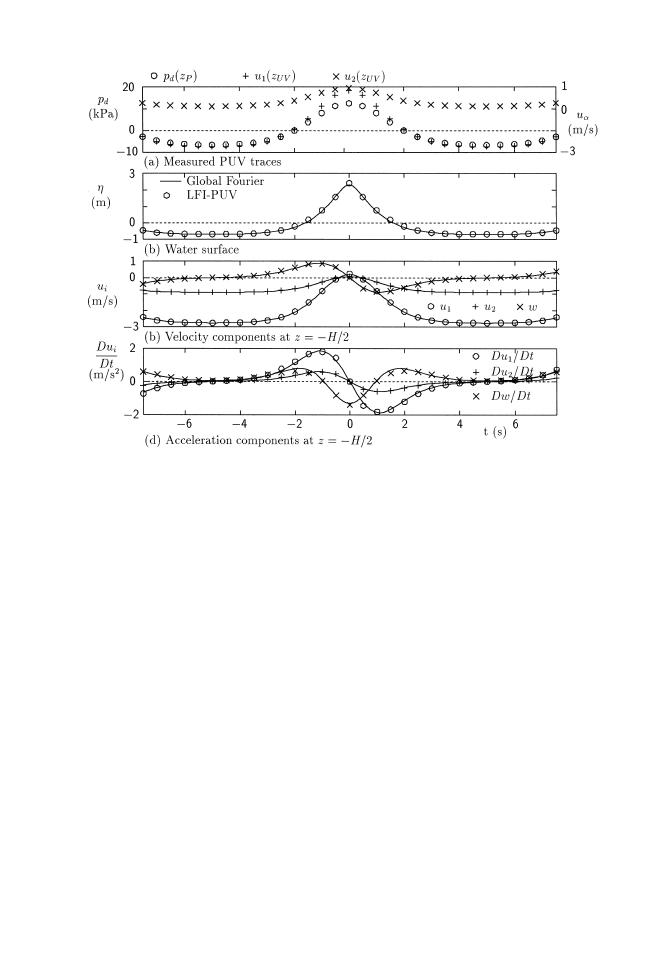
R.J. Sobey, S.A. Hughes r Coastal Engineering 36 (1999) 1736
31
Fig. 6. LFI-PUVw3,3,0.1x predictions for wave `Five'.
Similarly excellent agreement is achieved for waves `Five' and `Hundred', respec-
tively, in wave shallow and wave deep water. Comparisons of LFI-PUVw3,3,0.1x
solutions and near-exact Fourier kinematics are shown in Figs. 6 and 7. Collectively,
waves `Five', `Twenty' and `Hundred' demonstrate the suitability of the LFI-PUV
algorithm under expected operational conditions from wave shallow through wave
transitional to wave deep water.
7. Measured wave traces
The theoretical traces of Section 6 provide confidence in the problem formulation and
in the numerical algorithm. But the LFI-PUV methodology is intended for the nonlinear
interpretation of field PUV traces. The inherent measurement error bands of field PUV
traces will provide a much more challenging test.
The two field records partially illustrated in Fig. 2 have been used for evaluation.
Apart from sampling very different wave climates, these records differ very significantly
in the sampling rates, 1 Hz for the Platform Edith data and 4 Hz for the Columbia River
data.
Figs. 8 and 9 show sample LFI-PUVw3,3,0.2x predictions of local kinematics from
these records. These predictions are credible and they match the measured PUV traces
by definition, but there is no independent field data for confirmation. In the Sobey




 Previous Page
Previous Page
